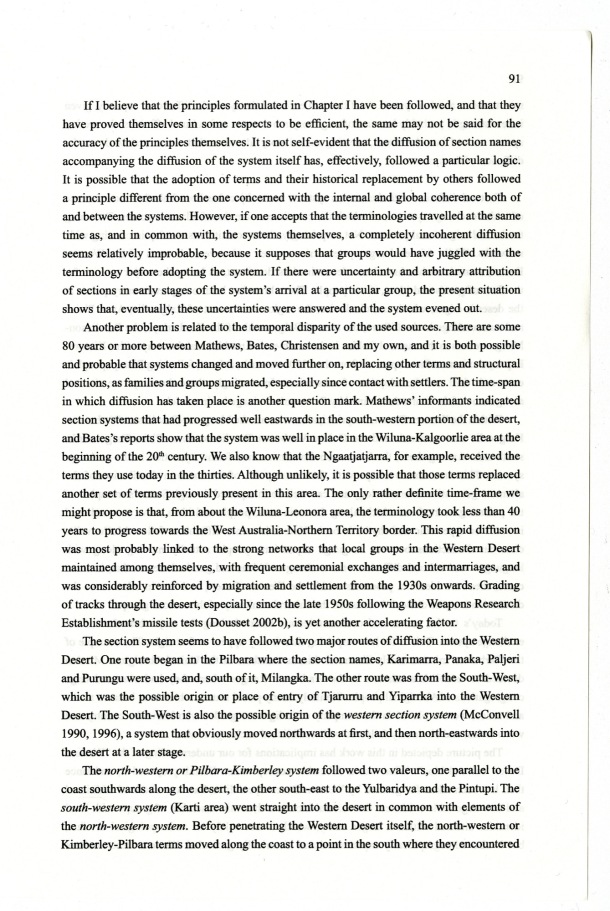|
| 
[Note: this transcription was produced by an automatic OCR engine]
91
If I believe that the principles fomiulated in Chapter I have been followed, and that they
have proved themselves in some respects to be efficient, the same may not be said for the
accuracy of the principles themselves. It is not self-evident that the diffusion of section names
accompanying the diffusion of the system itself has, effectively, followed a particular logic.
It is possible that the adoption of terms and their historical replacement by others followed
a principle different from the one concerned with the internal and global coherence both of
and between the systems. However, if one accepts that the temiinologies travelled at the same
time as, and in common with, the systems themselves, a completely incoherent diffusion
seems relatively improbable, because it supposes that groups would have juggled with the
terminology before adopting the system. If there were uncertainty and arbitrary attribution
of sections in early stages of the system’s arrival at a particular group, the present situation
shows that, eventually, these uncertainties were answered and the system evened out.
Another problem is related to the temporal disparity of the used sources. There are some
80 years or more between Mathews, Bates, Christensen and my own, and it is both possible
and probable that systems changed and moved further on, replacing other terms and structural
positions, as families and groups migrated, especially since contact with settlers. The time-span
in which diffusion has taken place is another question mark. Mathews’ informants indicated
section systems that had progressed well eastwards in the south-westem portion of the desert,
and Bates ‘s reports show that the system was well in place in the Wiluna-Kalgoorlie area at the
beginning of the 20"‘ century. We also know that the Ngaatjatjarra, for example, received the
terms they use today in the thirties. Although unlikely, it is possible that those terms replaced
another set of terms previously present in this area. The only rather definite time-frame we
might propose is that, from about the Wiluna-Leonora area, the terminology took less than 40
years to progress towards the West Australia-Northern Territory border. This rapid diffusion
was most probably linked to the strong networks that local groups in the Western Desert
maintained among themselves, with ii-equent ceremonial exchanges and intennan-iages, and
was considerably reinforced by migration and settlement from the 1930s onwards. Grading
of tracks through the desert, especially since the late 1950s following the Weapons Research
Establishment’s missile tests Dousset 2002b, is yet another accelerating factor.
The section system seems to have followed two major routes of diffusion into the Western
Desert. One route began in the Pilbara where the section names, Karimarra, Panaka, Paljeri
and Purungu were used, and, south of it, Milangka The other route was from the South-West,
which was the possible origin or place of entry of Tjarurru and Yiparrka into the Western
Desert. The South-West is also the possible origin of the western section system McC0nvell
1990, 1996, a system that obviously moved northwards at first, and then north-eastwards into
the desert at a later stage.
The north-westem or Pilbam-Kimberley system followed two valeurs, one parallel to the
coast southwards along the desert, the other south-east to the Yulbaridya and the Pintupi. The
south-westem system Karti area went straight into the desert in common with elements of
the north-western system. Before penetrating the Western Desert itself, the north-westem or
Kimberley—Pilbara terms moved along the coast to a point in the south where they encountered
|